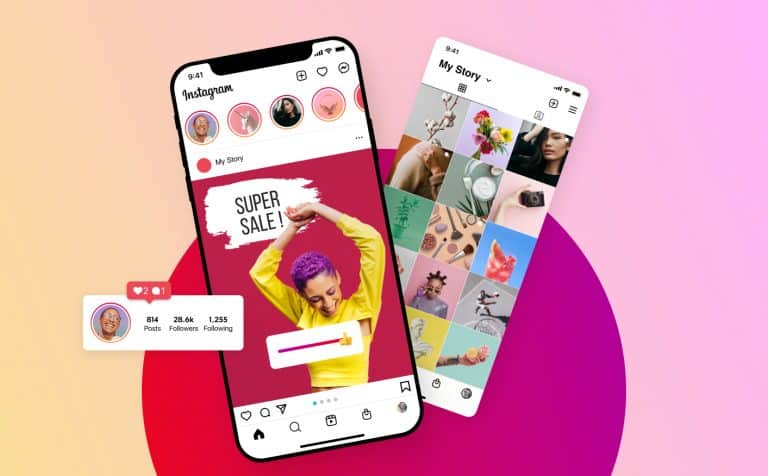
Spread the Word: Where to Repurpose Your Video Content
Like so many other marketing tools, video content is about more than simply “doing it.” A true video content strategy has multiple layers and is anything but a short-term solution. Video marketing is most effective when incorporated into your overall digital marketing strategy. Any digital marketing strategy is a long-term plan with multiple solutions and various avenues to success.
Video content is unique in that it can be used in multiple ways. While the true bread and butter of your video content strategy is likely to be online video ads, there’s no reason it has to end there.
In a world where content is king, video content is more effective than most. Given that, there’s no reason to stop at videos ads. Rather, you can repurpose your video in several beneficial ways.
Let’s do a dive into the video marketing waters and see how we can make the most of our video content by going beyond just the ads.
Start a YouTube Channel
There are few things more inspiring than a great YouTube Channel. YouTube is an extraordinarily popular website. Businesses of all shapes and sizes can be found there, and for good reason. YouTube has over a billion users (roughly ⅓ of all internet users), making it one of the more highly populated social media channels.
Although YouTube isn’t typically thought of as a social media website, it’s close enough to warrant the same attention as Facebook, Twitter, Instagram, and others. YouTube is essentially a hosting platform for your video content and is the ultimate go-to source for video distribution as well.
Most of the videos you see shared to social networks such as Facebook originated from YouTube. Maybe that’s why so many companies have invested time, energy, and money into growing their channels.
Building a YouTube channel offers many benefits to your business.
- It provides a free hosting platform for all your video content
- It provides another avenue for you to connect with customers and build a following
- It provides helpful SEO benefits
- It provides an avenue for advertising with video that can be monetized via YouTube Adsense
By linking to your website within your video description, you create a powerful backlink. This can help elevate your website’s SEO ranking in the long run. Simply fill out the description field when uploading and be sure to include your website.
This lets your viewers know where to go to find out more. It also lets YouTube and Google know that there’s someone linking to your website. The more links, the better off you are from an SEO perspective.
Use Your Video Content In Your Blogs
Who says blogs have to be all about writing? Well, they are. But in case you haven’t noticed (scroll up about 4 inches), many blogs incorporate images and video as well. This serves to enhance as well as support your content.
It also helps break up the never-ending stream of words and organize the blog more cleanly.
If your website is built in WordPress, adding videos is a snap. First, select the “Add Media” option at the top of your blog post window. From there, you can upload the video into your library and embed it into your blog post.
This can work just fine. However, if you’re pressed for hosting space, it can get full of videos pretty quickly. Additionally, uploading the video in its entirety like this may also lead to longer load times on the page. And hey, no one wants that.
An easier way to share your video is to select the “Insert from URL” option. This allows you to copy the address of a location where your video is currently hosted such as YouTube and insert it into the page from there. This will free up space and may lead to quicker load times as well.
Simply copy the URL from your YouTube video and paste it into the field above. Your video is now ready to insert into your blog post.
While we’re on the subject of blog posts, one of the main gripes that business owners have about blogging is coming up with topics. With regard to repurposing video content, you can use the topic of your videos to generate blog post ideas and vice versa.
This is especially useful if you’re doing longer form videos such as Q&As, FAQ’s or product descriptions. You can either transcribe the audio from your video into a blog post, or use the video itself as a helpful accompaniment to a broader topic.
Embed It In Your Email
Wait, you can do that? That sounds like magic! It’s not magic; it’s marketing! And in fact, it’s also a great strategy for your business. Email that contains video can see an increased click-through rate of up to 96%.
Need more? Anyone who’s dabbled in email marketing knows that open rates are important. It can be disheartening to send an email blast to your 5,000 recipients only to find that most of them don’t even get opened.
In fact, an “average” open rate is considered to be about 25%. This can vary depending on the industry, but the end result is that most of the emails you send don’t get opened. Thankfully, even mentioning video in your subject line can measurably increase your open rates. In fact, emails with video content may yield 5x the open rate of emails without it.
There are two basic ways to send an email with video: embed it or link to it. Embedding a video is a little tricky. If you’re using a mass email program such as MailChimp, it’s actually a snap. Simply use a video block.
Drag and drop the content block into the body of your email as you would any content block. From there, insert the URL of the video. This is where hosting your videos on YouTube while you build your channel yields an added benefit!
MailChimp will automatically generate a thumbnail image as well. Sending an email with video content this way truly couldn’t be easier. However, there are drawbacks to embedding a video in your email.
While MailChimp supports sending videos this way, not every customer will receive it. Due to spam rules and filters, many popular email services such as Outlook and Gmail won’t always display it. Hey, it’s Google’s world and we’re just living in it. Sometimes they don’t love video distribution as much as we do!
This is not to say that they DEFINITELY won’t play, but you will have some recipients missing out on your video content. In that case, you may be better off simply linking to the video from a thumbnail image.
WAIT! It’s not as difficult as it sounds, we promise!
Again, if you’re using a service like MailChimp, simply upload an image you’d like to use as a thumbnail image for your video. This can be a still shot from the video itself or any image you’d like.
Below, we’ve uploaded the Promo logo just to make it simple.
Now that you’ve got the image block where you want it and your image uploaded, look at the right-hand side. Select the blue “link” button next to where it says “Replace” and “Edit.” This will bring up the following box:
Copy the URL of the video and click insert. Now, when your email is sent, the image will be a clickable link that will bring up your video. Embedding your video is preferable of course, but you may want to avoid it due to the playability issues.
The benefit of embedding the video is that it creates a thumbnail image on its own and is also more obviously an email. So if you’re going the link route, make sure it’s obvious that your image is a link that’s meant to the be clicked!
Use It On Your Landing Page
Landing pages are great tools for any online marketing campaign. A landing page is essentially a special page on your site which is typically only accessible by clicking a specific link. In online marketing, landing pages are typically used as part of a specific advertising or marketing campaign.
For example, you may be advertising a special promotion. A landing page would be a standalone page on your website that was specifically created for that promotion. By having a landing page, you can direct the entirety of your audience’s attention to the promotion.
Since the landing page is only accessible by clicking a specific link, you would only send that link in a specific ad campaign. A video ad, for example, might link to your landing page. An email marketing campaign might link to your landing page. Simply visiting your homepage would NOT link to your landing page.
Using video on your landing page is a great way to grab attention and enhance your value proposition. Create a video that captures the essence of your campaign and provides your customer with the information they’re interested in. Remember, they clicked on a specific link for a specific reason.
Here’s a quick video that we at Promo use if we were to create a landing page for an ad campaign.
Short and to the point:
- Creating marketing videos is expensive.
- Promo is a great solution.
- Beautiful and affordable ads in less than 5 minutes.
Now that your customer is on your landing page, you can provide them with more information about what they can do next to take advantage of the opportunity you’re giving them.
Landing pages are not difficult to create, though you may need to get your web designer involved. However, the benefits can be tremendous as landing pages with video can increase conversions by up to 80%.
Post It To Social Media And Cross-Promote
Much of the video content you plan on producing is probably intended to be used as advertisements. However, aside from running paid ads on social media, you can simply upload them directly to your page.
Why would you do this? Ads only run for the length of the campaign. However, videos that you upload directly to your page are always there. What’s more, you can reshare them or re-upload them at any time.
By keeping your content on your page, you’re also increasing the chances that others will see it and share it. This is also a great way to cross-promote your business with another business, i.e. “hey, you share mine and I’ll share yours.”
Before approaching another business for any type of cross-promotion campaign, ensure that there is some meaningful overlap between your customer bases without being direct competitors. For example, my cheese company would love to share your cracker company’s video and vice versa.
This type of organic sharing can help build a broader reach and promote your business to an entire other customer base. It can be a great tool for inspiring an entirely new set of customers to check you out!
Let’s Break It Down
Okay, so by now you’ve created at least one totally awesome piece of video content. What have we done with it?
- You’ve created an online video ad, presumably on Facebook.
- Uploaded that video to your YouTube Channel while linking it to your website for SEO purposes.
- Created a blog post using the subject of that video, or using the video to enhance the blog’s focus.
- Sent the video in a targeted email marketing blast to your contact list.
- Created a landing page for your online marketing campaign and featured your video on the landing page.
- Shared that video on social media and cross-promoted content with another business to reach a wider distribution of customers.
WOW! That’s a lot of use out of ONE video! Good for you!
Realizing the Power of Video Content
This is the type of content distribution that is only possible with video marketing. From the list above, that’s SIX ways to repurpose a single piece of video content. Now, imagine what you can do with all the other videos you’re creating?






